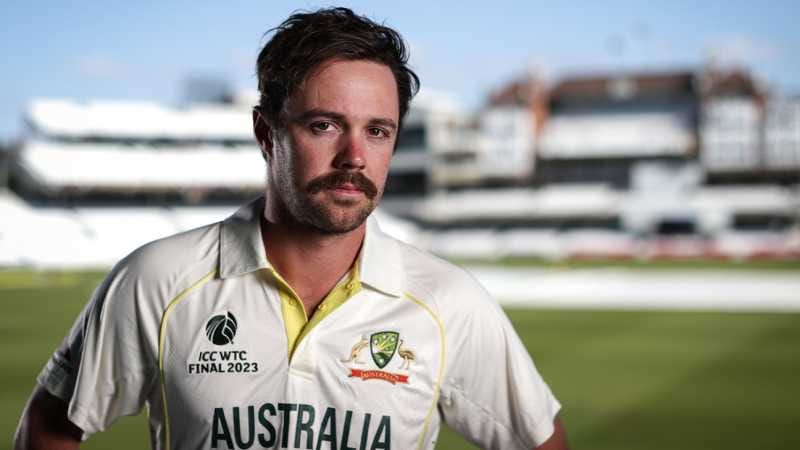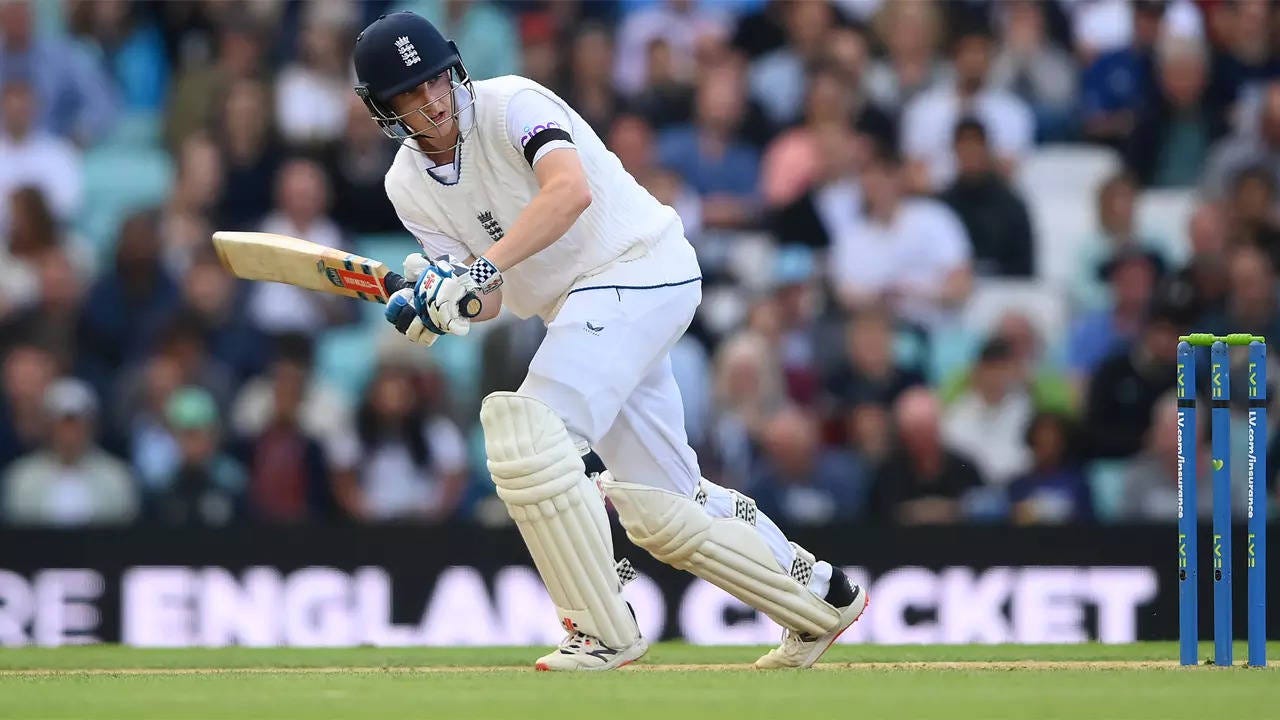Travis Head—not having much say in the matter—embraced a sense of normalcy by inheriting "Michael" as his middle name. In contrast, Harry Brook, also excluded from the decision process, opted for a more flamboyant moniker: "Cherrington."
If truth be known, I've yet to come across a “Cherrington” in my years of wandering. For the Googlers amongst you, it seems Brook’s middle name comes courtesy of his mother. Enough said.
Despite standing on opposite sides of the bat, Head and Brook share many batting traits, which we get to shortly—this seems remarkable considering the contrasting paths they took during their formative cricket years.
SpeakingNick is a reader-supported venture. Free and paid versions are available. The best way to support me is by taking out a paid subscription.
Head, raised in Adelaide's northern suburbs, was a constant companion to the Craigmore Cricket Club. Father Simon affirmed, "His son always had an insatiable appetite for cricket." Mr. Head cited Ricky Ponting as an early influencer.
Whereas Brook grew up in Burley, north-west of Leeds, Yorkshire. Unbeknownst to your scribe, Brook attributes a large chunk of his early development to the coach of Sedbergh School, Martin Speight, a teammate of mine at Durham. It always seemed like the paintbrush would occupy Speight post-cricket, not coaching.
Still, both were on their way, albeit in very different environs.
Head honed his technique on true, firm, fast pitches; where as Brook battled with slow, low, uninviting puddings in the Cumbrian countryside. As is so often the case, though, both players shared an innate love and attachment to the game. That bond with the game remains visible to this day.
I see a seismic shift in how today’s batting orders are built and used. Historically, their position in the order (number 5) has been dismissed as a soft spot. The older brigade sees the openers and number 3 as key positions. "See off the new ball and cash in later." Even number 4 was frowned upon—a spot for the flashy, mercurial type.
Today’s coaches give equal weight to the new ball and a ball 30 overs old; in some cases, the early overs are simply a prelude to the main course with the prevalence of increased ball care and reverse swing. I’ve always regarded 5 as a pivotal position due mainly to its connecting the top order with the bottom. Steve Waugh made a pretty good fist of it—Waugh's ability to anchor innings, form partnerships, and provide stability in the middle and late order was critical to Australia's success over his career.
Both Head and Brook have the position in the order locked away, which one comes out on top in the head-to-head* matchup will go a long way towards deciding the series. *pardon the pun.
Enjoying the read? If you feel like it, I’d love if you’d share this post with your friends! Or, if you received it from a friend, please forward to another.
Bylines and subplots have historically littered Ashes landscapes.
Currently, we see Stuart Broad and David Warner trading punches—my hope is Australia wins the toss and bats later today, allowing them to get to it.
2005 saw ‘Freddy’ Flintoff duel with Adam Gilchrist. Flintoff initiated the round-the-wicket strategy against southpaws, with Gilchrist unable to answer.
Shane Warne and Kevin Pietersen—what a contest, the old bull and the young version, and while that was going on, Warne was also busy tormenting Ian Bell.
Lords, 2019, saw Jofra Archer bowling thunderbolts at Steve Smith, eventually sending him to the canvas—which ironically kick-started Marnus Labuschagne’s career.
And then Glenn McGrath continually luring Mike Atherton across his crease, and of course—sorry, Goochie—Graham Gooch trying to hide his front pad from Terry Alderman.
And I’m now offering up two new enforcers: Travis Head and Harry Brook. Not in direct competition, but it will still be compelling viewing all the same.
At 29, Travis Head stands significantly ahead in both age and experience compared to his counterpart. Later today, Head will have played 29 more Tests than Brook—37 to eight. Head has six Test centuries, and Brook has four—an excellent return in just eight Tests. (So, Brook and Speight have four combined!)
Talk to any Australian supporter, and there is little doubt they will tell you Head has been a slow burn—he was inexplicably omitted only four Tests ago. I say inexplicably, but in context, it was not a shocking decision—Head still had several holes in his armour.
Conversely, the 24-year-old Harry Brook has emerged as a rising star under the auspices of England's new regime, spearheaded by the influence of 'Bazball.' To his advantage, he’s only known one way to play Test cricket, a method that appears to be in perfect tune with his own song sheet.
Neither player allows bowlers to lay siege, instead adopting an instinctive offensive bent and storming the castle with only minimal cause for concern. Both know that success is not guaranteed. A translucent light beckons that only the brave can see; both Head and Brook see this. They play against the odds. They will play the odds. Both teams need this from their centremen.
At 5, Head follows Australia’s engine room—Steve Smith and Marnus Labuschagne—and precedes a potential soft spot in Australia’s order. Whereas Brook is cushioned by the reliable experience of Joe Root, Ben Stokes, and Jonny Bairstow. The potential for game-changing partnerships presents itself everywhere when you combine those names.
Both Head and Brook craft partnerships easily; in fact, they thrive in them. And, more importantly, both have the capability to increase the pace of the innings from any start point—the entry point.
Already a subscriber, and you’re feeling in a giving mood? Why not gift a subscription; that would be a kind thing to do!
Australian coach Andrew McDonald has said of Head: "The beauty with Travis Head is that he plays the same way whether we’re 3–30 or 3–200." He added, "It’s an absolute luxury having your number five play this way." “And a method we encourage.”
Clear and undeniable evidence of this was recently showcased in the World Test Championship final, where Head made an undeniable 163 from only 174 balls. Head’s entry point was 3–76, and his exit was 4–361. The partnership with Steve Smith yielded 285 runs in 70 overs, effectively taking the game away from India.
Thankfully for Ireland, Brook barely made it to the crease in their recent Test match. His previous Test was in New Zealand, where he made a first-innings century—186 from 176 balls. Brook’s entry point was 3–21, and his exit 4–323. Brook’s partnership with fellow Yorkshireman Joe Root realised 302 in just 60 overs.
"Yes, you can make numbers work for you any way you want," as the saying goes. And cricket stats can be manipulated and cherry-picked to support any number of narratives or arguments. However, these two performances alone by Head and Brook demonstrate the immediate influence that such players can have on the outcome of a Test.
Both possess the ability to change the course of a game in a session.
The men from Adelaide and Burley seem set to shine in this much-anticipated Ashes series.





